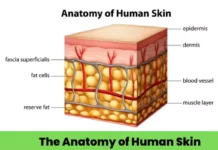The landscape of precision welding has undergone remarkable transformations in recent years. Particularly in the realm of micro-welding, experts have been adapting to an ever-growing demand for smaller, more intricate components across various sectors. Have you ever wondered how industries like electronics and medical devices achieve such precision? In this article, we will explore the advancements in precision welding that are enabling manufacturers to create complex components with unparalleled accuracy.
From laser beam welding to microscopic TIG techniques, we’ll delve into the technology driving these innovations. You’ll also discover how businesses specialize in these practices and the industries reaping the benefits. Let’s embark on this journey into the world of precision welding, where every detail counts.
Understanding the Demand for Precision Welding
In today’s fast-paced industrial environment, the need for precision welding has surged. Industries are pushing for miniaturization, requiring components that fit into tighter spaces while maintaining functionality. Sectors like electronics, automotive, and medical devices demand impeccable welding techniques to ensure that even the tiniest parts can work in harmony.
Moreover, traditional welding methods often fall short when it comes to these minute components. Hence, specialized techniques are crucial. The ability to manipulate micro components without compromising their integrity is a game changer for manufacturers, making precision welding indispensable.
The Impact of Laser Beam Welding
Laser beam welding stands out as a game-changer in precision welding. By utilizing a high-powered laser, this technique achieves a level of precision that traditional methods simply cannot match. The laser melts the materials at the joint, allowing for deep penetration and creating strong bonds in thin structures.
This innovation has found a home in industries like aerospace and electronics, where precision is paramount. Thanks to its accuracy, even the smallest parts can be welded without affecting nearby components. Plus, the reduced risk of overheating translates into a stronger, cleaner weld every time. Isn’t that impressive?
The Advantages of Microscopic TIG Welding
Microscopic TIG welding is another cutting-edge method making waves in the precision welding field. By minimizing the heat source, this technique allows for extremely fine and precise welds. It’s particularly useful in hard-to-reach areas or when working with sensitive components.
This method excels in applications such as microelectronics and medical implants, where even the slightest deviation could affect performance. If you’re involved in such projects, you’ll appreciate the meticulous nature of this welding process. The end result? High-quality welds that can stand the test of time.
The Evolution of Micro Welding Technologies
Micro welding is rapidly evolving, with technological advancements paving the way for more precise and efficient operations. New welding technologies allow manufacturers to tackle increasingly intricate products while using less heat and minimizing the impact on surrounding areas.
In the medical device sector, for instance, specific welding processes are critical for functionality and safety. As manufacturers continue to innovate, the potential applications for micro welding are expanding, driving the industry forward.
Industries That Benefit from Precision Welding
Numerous industries are harnessing the power of precision welding. Here are some key areas where these technologies are making a significant impact:
These fields rely heavily on precision welding to produce reliable and functional components that meet rigorous standards.
The Role of Specialized Companies in Precision Welding
As the field of precision welding evolves, specialized companies are stepping up to meet the challenges. These businesses focus not only on delicate projects but also on offering tailored solutions for a variety of industries.
Take Micro Weld, for example. They have carved a niche in providing precise welding services specifically for sectors like aerospace, medical, and electronics. Their technological expertise allows them to handle complex welding tasks, ensuring that every weld meets the highest standards of quality and precision.
The Future Outlook of Precision Welding
Looking ahead, the future of precision welding is promising. With the ongoing demand for smaller, more efficient components, advancements in welding technologies are essential. Expect to see innovations in automation, laser technology, and even AI integration, all aimed at enhancing speed and accuracy in welding processes.
Moreover, as industries continue to evolve, the quest for micro components will intensify. The need for reliable and precise welding will never be more critical, especially as we push the boundaries of what’s possible in technology and manufacturing.
The world of precision welding is not just advancing; it’s transforming how we think about production. With every new technique and technology, we are redefining the limits of what’s achievable in micro-welding. So, stay tuned—this journey is just beginning!





















